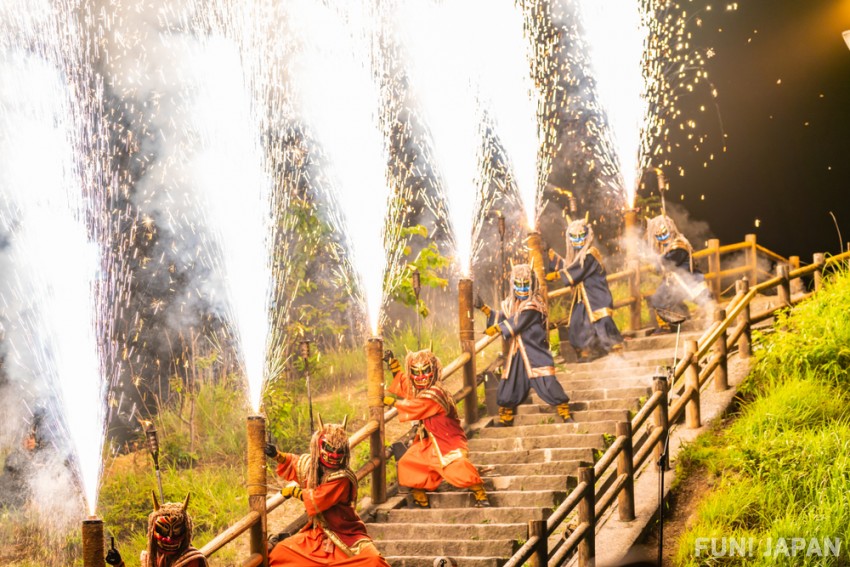
Appearing simply as demons, oni are one of the most familiar of Japan’s supernatural beings known as yokai.
What are Oni?
Oni (鬼) are the go-to evil character in Japanese folklore, with a long history as brutes that favour violence over pretty much anything else. From terrifying children in winter festivals to guarding the entrance to hell, they are found across Japan and become easy to spot once you know where to look. While they largely have a reputation as monsters, some oni are friendly. Whether they’re welcoming visitors to Beppu’s onsen (hot springs) or bringing happiness to the people of Kunisaki - they’re not all bad.
What do Oni Look Like?
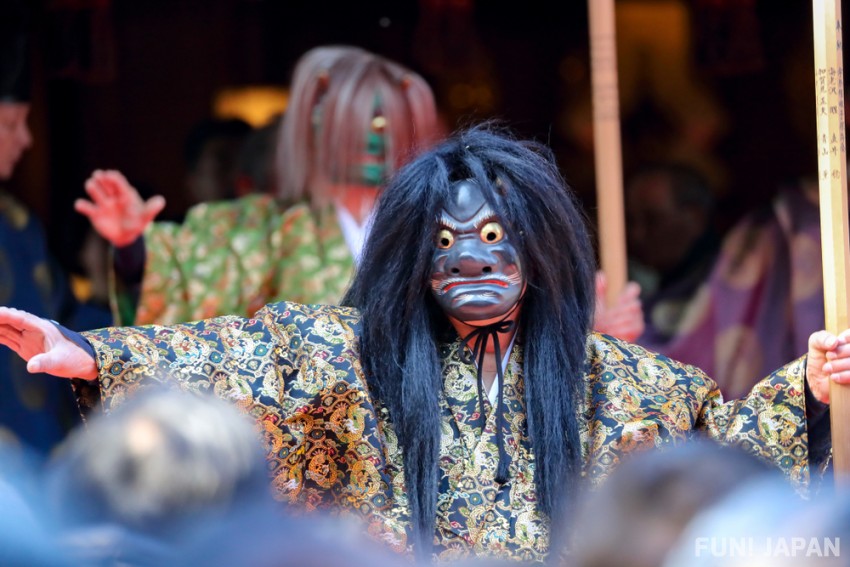
Often very large and muscular, they generally have human figures but would tower over regular men. Their famously ugly faces are always grimacing and topped with one or two horns, much like trolls or ogres in the rest of the world. They also have large, sharp teeth that protrude from their mouths and wear little but a loincloth. Most hold a trust baton in one hand which is used to attack anything it comes across.
What is the History of Oni?
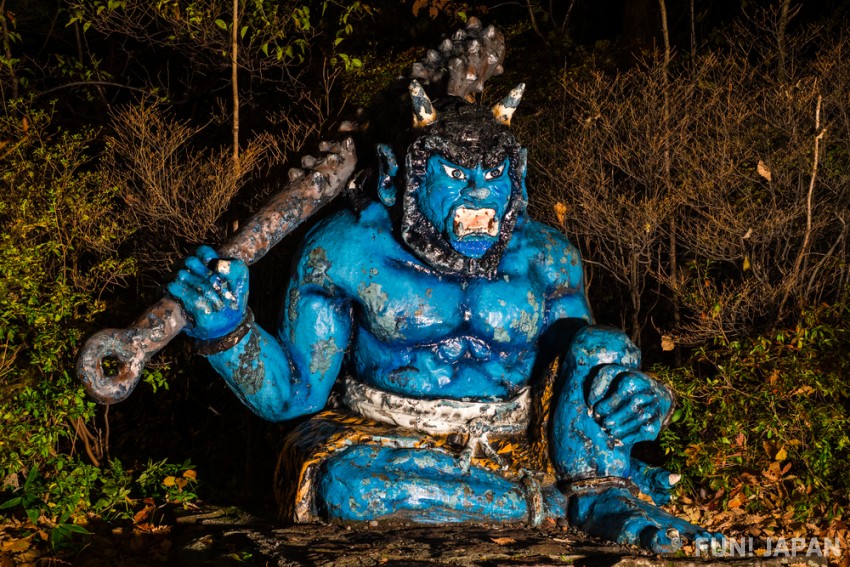
Believed to have been brought to Japan along with Buddhism in the 6th century, the concept of oni have evolved in Japanese legends ever since. In Japanese history Oni have appeared in all corners of society, from religion (mainly Buddhism) to literature, playing the baddie in tales such as Momotaro. In Buddhist belief, oni were the servants of death in hell, responsible for torture and punishment in the underworld.
The term oni actually refers to a variety of different supernatural beings, with the most well-known being terrifying demons. This representation is connected to Buddhism, appearing in depictions of hell and as demons to be warded off in seasonal festivals like Setsubun. However, it can also refer to deities and ancestral spirits, both of which can live in harmony with mankind, and are often associated with mountains. The term oni can also be used to describe different things - for example in a practical sense it often means large, like oni-hitode (large starfish). It can also be used to describe a person’s character, such as ‘oni- ‘oni-shogun’ (lion-hearted shogun) to mean brave.
Where can you see Oni?
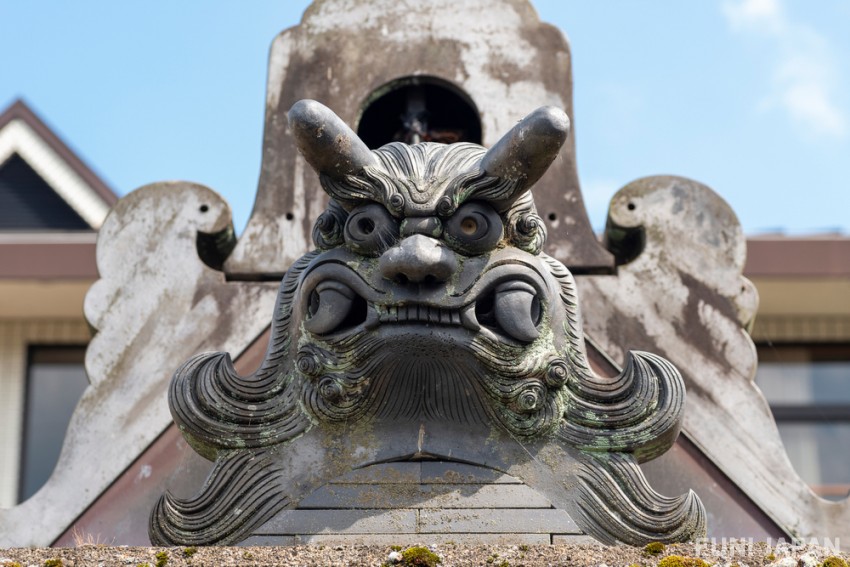
One of the most common places to spot an oni is on Japanese Temples, but you have to look up high. The roof ornaments are shaped like the faces of oni and guard the temple from evil spirits.
Although they can look similar, it is to be noted that that two statues found guarding temple entrances are not demons. Despite their muscular shape and threatening stance, they are actually “Nio” (仁王) or “Kongorikishi” (金剛力士) - warriors who symbolize the birth and death of all things. However, when inside temples you may see the demons
Oni Museum and Onikko Land - Tottori
Located in rural Tottori, this museum is easy to spot thanks to the giant demon sat atop it, accompanied by a much smaller red tori gate. Featuring the history of demons and their contemporary appearance in media and popular culture, the museum has a large children’s play area with some rides requiring a small fee. The town of Houki claims to have the oldest associations with Oni, hence their resident yokai.
Spot Information
- Name: Onikko Land (おにっ子ランド)
- Address: 580 Udai, Houki, Saihaku, Tottori
- Opening Hours: 10:00 – 17:00 / 9:00 - 17:00 (July- September)
- Regular Closing Days: Tuesdays, National Holidays and entirely from December - March.
Jigoku Meguri, Beppu
This famous onsen area is known for the surprisingly friendly red and blue yukijin (湯鬼神) - welcoming oni that brings good luck to those visiting the onsen. Known as the Jigoku (Hells of Beppu), the onsen here include red bubbling pools, bright blue ones and even crocodiles - making a demon seem right at home.
The Mountains of Kunisaki
Very protective of its oni, the town of Kunisaki believes they bring happiness to the residents as a form of ancestral soul. The unusual rocky mountains of the area are believed to provide cave like homes for the oni, who were seen as so powerful they were more like deities. Many made dangerous pilgrimages to the caves to obtain powers and the oni were respected rather than feared. Now the area has festivals, statues and giant carvings as well as natural spots showing demon effects.
Senkoji Temple, Osaka
This temple is known for its depictions of heaven and hell, with plenty of helpful oni to help you along the way. The small temple is home to the Jigoku-do (hall of hell) which shows Buddhist hell and will even measure how likely you are to end up there (depending on your fortune). There’s the unfriendly face of Enma (閻魔, ruler of the afterlife) surrounded by horrifying demons and a video about the risks of living a bad life. If the demons get too much, you can always visit heaven afterward.
Spot Information
- Name: Senkoji Temple (全興寺)
- Address: 4-12-21 Hirano Honmachi, Hirano, Osaka
- Opening Hours: 09:00 - 17:00
- Entry: Free
Demon Festivals in Japan

Demons appear in a number of Japanese festivals - often held in Winter - and it’s a great chance to see the terrifying oni in their full role.
Setsubun: Demons and Bean Throwing
Setsubun (節分) is one of the most widely-held festivals in Japan, with ceremonies taking place in every reasonably-sized temple across the country. Beans are thrown to ward off demons, with some temples employing oni for crowds to aim at while they shout ‘Devils out, happiness in!” It is held in the first few days of February, falling on the day before the start of Spring. Along with bean throwing, people eat special Eho-maki (恵方巻き) sushi rolls while facing the lucky direction of that year.
Namahage Sedo Festival: Terrifying Demons
Held in snowy Akita in the depths of winter, Namahage Sedo Festival (なまはげ柴灯まつり) is an intangible cultural asset in Japan. The horrifying demons look for misbehaving or lazy children and were originally on the lookout for those who sat beside the fire too long - cutting off their burned skin. They do, however, also help with prayers for rice harvests - so they aren’t only things of terror. You can see the demons descend from the mountain with burning torches in early February, searching the town for naughty children, with drums, fires and a few sweet treats to hand out. There is a museum in the town if you don’t manage to make it to the festival.
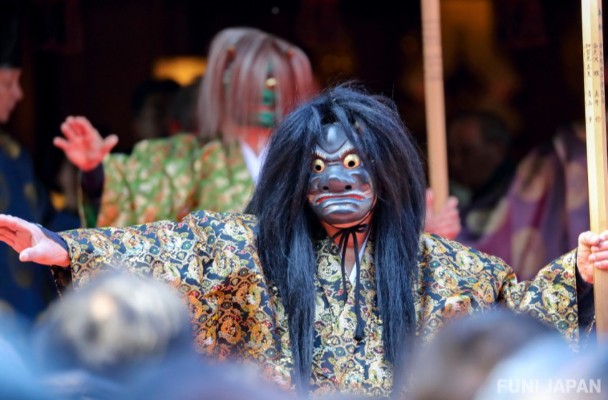
Comments